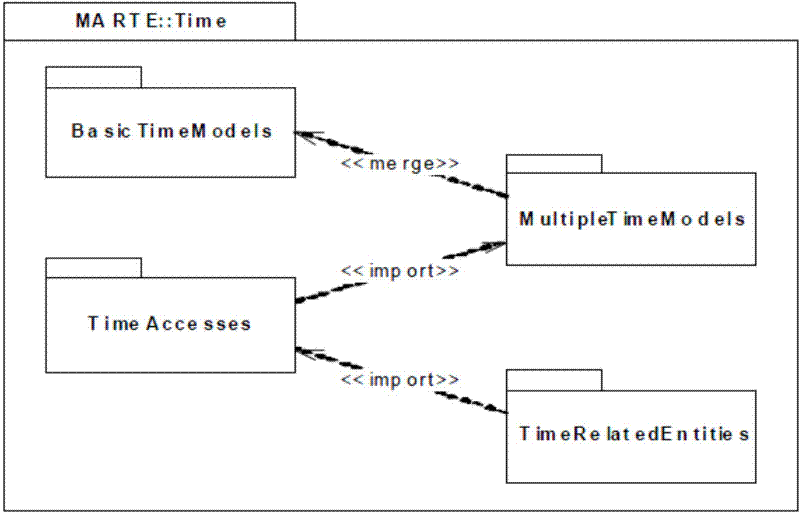Method for identifying cooperative behaviors of components of real-time embedded system based on UPPAAL tool
A technology of embedded systems and verification methods, applied in the field of verification of collaborative behavior between components of real-time embedded systems, can solve problems such as lack of model verification theory and practice methods, achieve security assurance and specificity, reduce the probability of errors, Effective safety guarantee
- Summary
- Abstract
- Description
- Claims
- Application Information
AI Technical Summary
Problems solved by technology
Method used
Image
Examples
Embodiment 1
[0069] Verify that the input information is a system for MARTE state diagrams and MARTE sequence diagrams
[0070] What present embodiment adopted is a simple and easy train control system. image 3 It is a schematic diagram of the train control system. When trains merge, only one train is allowed to pass through the critical section to prevent collisions. When a train arrives near the front of the critical area, it will ask the control system (control) whether to allow it to pass. If not, it will stop immediately; if it can, the control will order the Gate to change the track so that the train passes through the critical area. Notify the control when the train leaves the critical section, and the control will notify the waiting train to restart and enter the critical section through the gate. If there is already a train waiting outside the critical area on another track when the train arrives (that is, when the waiting global variable is true), the new train will stop imme...
Embodiment 2
[0080] Verify that the input information is a MARTE component drawing with a detailed CCSL description
[0081] This embodiment adopts a DMA display card (filter) component system. The DMA display card can directly read the byte stream (bit stream) information from the corresponding memory part, and after internal processing and transcoding, the byte stream bit stream will be output to the display in the format of encoding one pixel per 4 bits (pixel) information; in addition, due to the limited width of the display, the display width of the display is stipulated in this embodiment to be 8 pixels, that is, when the display card outputs to the eighth pixel, it will send a control signal to the display next line to prompt it to change the line .
[0082] Figure 14 It is a system component diagram of the DMA graphics card. Interaction between components is done through ports. The time relationship of information transmission between ports is described by CCSL. Figure 15 Di...
PUM
 Login to View More
Login to View More Abstract
Description
Claims
Application Information
 Login to View More
Login to View More - R&D
- Intellectual Property
- Life Sciences
- Materials
- Tech Scout
- Unparalleled Data Quality
- Higher Quality Content
- 60% Fewer Hallucinations
Browse by: Latest US Patents, China's latest patents, Technical Efficacy Thesaurus, Application Domain, Technology Topic, Popular Technical Reports.
© 2025 PatSnap. All rights reserved.Legal|Privacy policy|Modern Slavery Act Transparency Statement|Sitemap|About US| Contact US: help@patsnap.com



